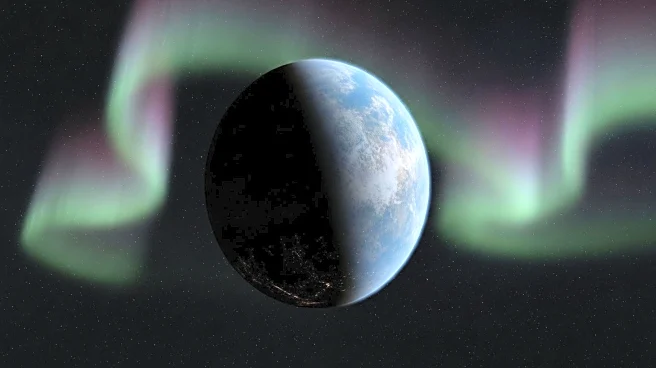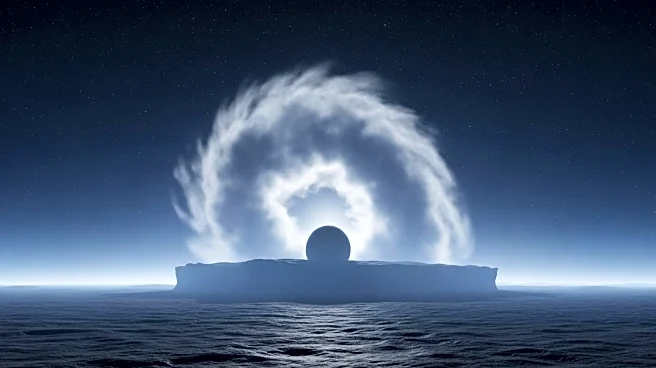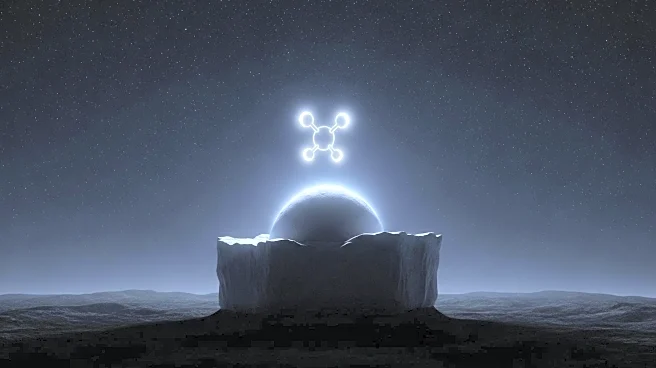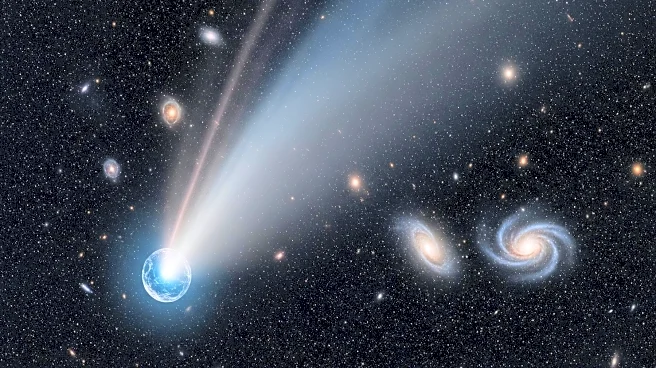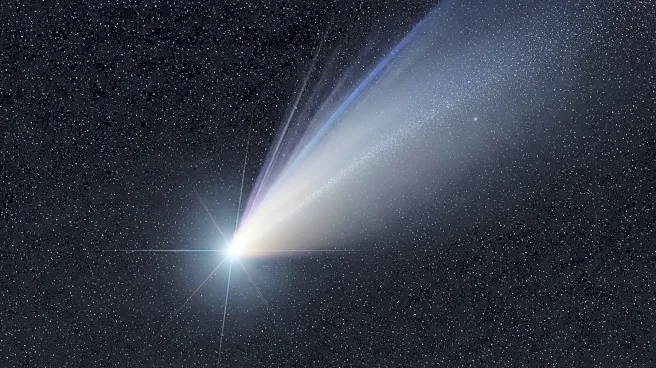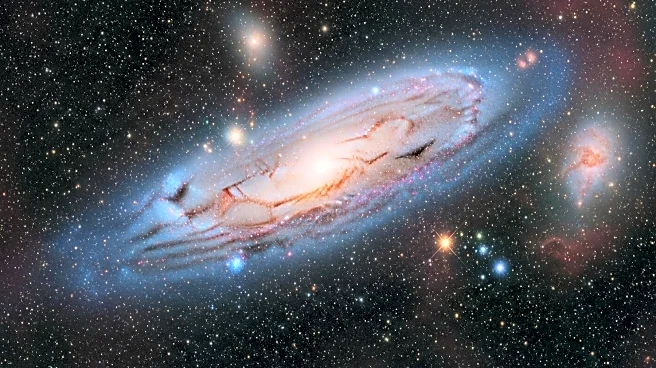What's Happening?
NASA's James Webb Space Telescope has made a groundbreaking discovery by providing the first direct measurements of a potential moon-forming disk around a large exoplanet named CT Cha b, located 625 light-years from Earth. The carbon-rich disk, which is not part of the larger accretion disk around the central star, offers insights into the formation of moons and planets. Researchers have identified seven carbon-bearing molecules within the disk, including acetylene and benzene, contrasting with the water-rich chemistry of the host star's disk. This discovery is pivotal in understanding the evolution of planetary systems and the formation of moons, which may outnumber planets and potentially harbor life.
Why It's Important?
The findings from the James Webb Space Telescope are significant as they provide a deeper understanding of the processes involved in the formation of planetary systems. Observing the formation of moons and planets is crucial for comprehending the evolution of systems across the galaxy. The discovery of a circumplanetary disk, similar to the hypothesized birthplace of Jupiter's moons, offers a unique opportunity to study the ingredients and physical processes involved in moon formation. This research could lead to advancements in our knowledge of how our solar system and others develop, potentially impacting future explorations and studies of extraterrestrial life.
What's Next?
Researchers plan to use the James Webb Space Telescope to conduct a comprehensive survey of similar objects to better understand the diversity of physical and chemical properties in disks around young planets. This ongoing research will continue to shed light on the formation of moons and planets, providing valuable data for comparisons to our solar system's birth and enhancing our understanding of planetary evolution.

